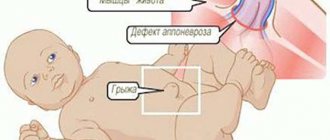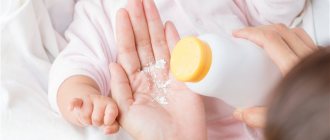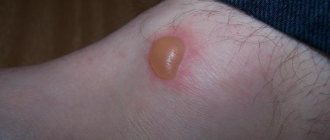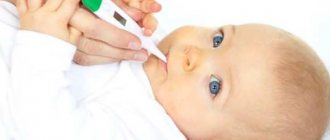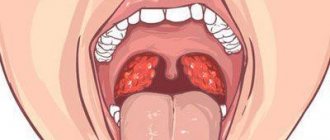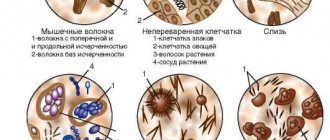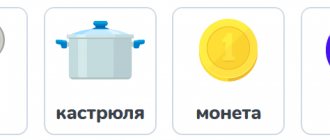The occurrence of an umbilical hernia in a newborn baby is not uncommon. It is a protrusion in the umbilical ring, which can acquire different sizes. The reason for the formation lies in the weakness of the abdominal muscles. Traditional methods of dealing with the problem are daily massage in a circular motion in a clockwise direction, swimming, exercise therapy and placing the baby on his stomach 10-15 minutes before feeding.
An umbilical hernia in a newborn baby is a protrusion in the umbilical ring, which can take on different sizes.
Fixation of the umbilical ring can be facilitated by a non-sterile bandage of a universal size with a convex element for pushing through the growth. Another option is to seal the umbilical hernia in newborns with a special plaster.
The procedure is often performed by a surgeon in a medical facility, but it is not difficult, so it can be done at home with your own hands.
Types of patches
To seal the hernia, patches of the required width and shape are used. These products are offered by several manufacturers:
- Hartmann. Purchased individually in sealed packaging, it is waterproof and hypoallergenic. The baby's delicate skin is not irritated. The appearance of the adhesive plaster is identical to the traditional bactericidal one for the protection of calluses: rectangular shape, soft base in the center.
- Chicco. It is used rather for the prevention of hernia in infants who experience digestive problems. The patches are breathable and are applied to the still unhealed umbilical cord.
- Porofix. Made from natural fabric that does not cause an allergic reaction in children. This adhesive plaster consists of two parts that interlock like a strap and form a fold over the abdominal wall. Use is possible only after the navel has healed.
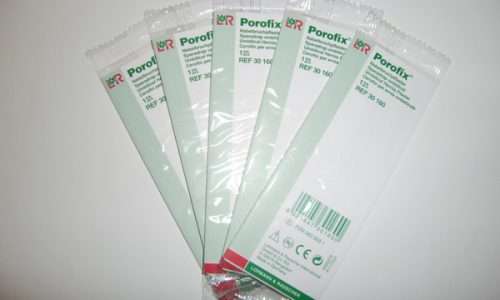
The Porofix patch is made from natural fabric that does not cause an allergic reaction in children.
How to cover an umbilical hernia with a plaster
Types of patches
You can purchase special adhesive plasters at any pharmacy without a doctor’s prescription. Universal products are characterized by a traditional rectangular shape, the inside has a fabric layer, and the outside has an adhesive layer. “Bandages” are developed specifically to prevent the formation and treatment of umbilical hernia in newborns. There are many varieties, but they all have a similar principle of operation.
- The Porofix medical patch was developed specifically for newborns. All features of the course of the disease and the physiological characteristics of the child were taken into account. The medical belt is made of high-quality cotton and does not cause allergic reactions. The special shape of the fasteners allows you to securely and easily fix the skin fold above the navel. The original product helps strengthen the muscles of the anterior wall of the abdominal cavity and restores the correct anatomical structure of the internal organs. Use is contraindicated until the umbilical wound has completely healed. If you neglect this, the skin under the fold will become wet, which will create favorable microflora for the proliferation of pathogenic organisms. Change the adhesive plaster at intervals of 1-2 days.
The principle of action of anti-hernia patches is the same, so you can choose the appropriate brand on an individual basis.
All features of the course of the disease and the physiological characteristics of the child were taken into account.
Treatment of umbilical hernia with a plaster
An effective way to treat hernia in newborns is complex therapy in the form of daily tummy massage, bathing and the use of an umbilical patch. With proper therapy, a hernia up to 3 cm in size can be treated at home.
Despite the apparent simplicity of the method, it is not recommended to engage in independent treatment - firstly, only a doctor should correct a hernia, who will show and teach young parents how to do it correctly, secondly, not every patch is suitable for sealing it, and thirdly, only a pediatrician or pediatric surgeon will be able to determine whether such a measure is necessary or whether the hernia will resolve on its own.
Parents will be taught how to properly massage and bathe a baby by a visiting nurse and pediatrician, who come within the first two days after discharge from the hospital. If the baby is at risk, then the pediatrician will come on the day of discharge. But how to choose an umbilical patch for newborns?
There is no need to choose - the Porofix umbilical plaster from the German company Lohmann & Rauscher is the most effective plaster for the treatment of umbilical hernias in newborns in Russia. According to statistics, 8 out of 10 mothers choose Porofix for complex treatment of a hernia in their baby.
“Porofix” is a ready-to-use patch for the treatment and prevention of umbilical hernias in newborns from the first days of life. It is covered with an anti-allergenic adhesive layer. Has good adhesion. Does not irritate baby's skin.
The patch consists of two parts “A” and “B”, which hold the internal organs in the correct position after it is fixed.
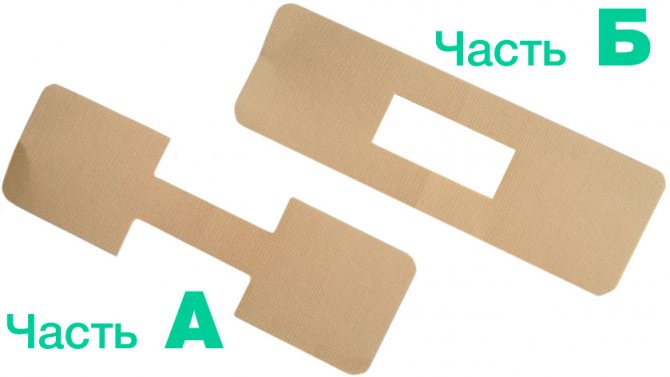
The patch consists of two parts A and B, which hold the internal organs in the correct position after it is fixed.
What is an umbilical hernia patch?
The plaster for the treatment and prevention of umbilical hernia is similar in appearance to a regular adhesive plaster, which each of us used to cover small wounds on the body. It is made of a special elastic material. The fabric helps the skin breathe and at the same time does not allow moisture to pass into the navel area.
Some types of adhesive plasters have a soft pad in the middle, others come with a special sterile lining, others have a somewhat unusual shape, and in order to seal them, you will have to read the instructions. Plasters are used not only to treat an existing hernia, but also to prevent it or to prevent the entry of microorganisms and infection into a wound from the umbilical cord that has not yet healed.
Modern plaster and bandage for the treatment of hernia
Each type of patch is designed for a specific purpose, and you should carefully read the instructions before using it. The patch plate is individually packaged and made of a special material that does not cause itching or irritation on the delicate skin of the baby’s tummy.
Regular rectangular shaped patches are simply pressed tightly against the tummy on one side.
Types of patches
Before applying the patch, the place where the umbilical cord was cut must heal so as not to provoke skin inflammation. Dressing material is used to create an aesthetically pleasing appearance of a child’s navel. The adhesive side does not create discomfort during use, and the top layer, made of natural fabric, does not cause allergies.
Methodology
Before trying to get rid of a hernia, you need to make sure the diagnosis is correct.
The patches are sold without a doctor's prescription, can be used at home and do not require special medical training, but for the first time it is still better to observe the surgeon's actions.
Before applying the patch, the umbilical cord is disinfected. The adhesive part is fixed on one side. We apply light pressure and the hernia is reduced inward. After this, the remaining part of the patch is fixed. In the case of the Porofix brand, each of the parts is partially glued on either side of the navel.
The free parts, similar to the principle of fasteners on a belt, are threaded into each other, and then tightened and glued completely. Small folds form on the skin - this is normal. The wearing time depends on the patch itself and its properties and ranges from 3 to 10 days.
The best manufacturers of umbilical hernia patches
The highest quality and best plasters are produced by three companies: Porofix, Hartmann, Chicco:
- Porofix is the same specially shaped adhesive plaster that is used to form and seal a fold of skin on the baby’s abdomen. It is this type of remedy that cannot be used on a navel that has not yet healed. The fold of skin will not allow it to dry out and may cause suppuration.
- Hartmann adhesive plates have a special pad in the middle, which is applied to the navel. They are made of a special material that does not allow water to pass through and does not cause irritation.
- Chicco products come with a special sterile disc. It must be applied to the navel that has not yet healed before fixation. The material from which the plates are made has high permeability and allows the skin to breathe. The product is attached to the body well and tightly.
Each type of patch is good in its own way and is designed to solve specific problems. Be sure to consult your doctor before treating your newborn.
Pediatrician of the 2nd category, allergist-immunologist, graduated from the Belarusian State Medical University of the Federal Agency for Health and Social Development. Read more »
Copper coin
Traditional medicine also offers options for getting rid of hernia in infants. For example, using a copper coin as a latch should relieve the child of discomfort in the abdomen and bulge in the umbilical ring. The raised area is treated with a weak iodine solution, a coin is placed on top and pressed with an adhesive plaster. Before bathing, the coin is removed and applied again after the water procedure.
To prevent the appearance of a hernia in a newborn, a mother should avoid foods that lead to excessive fermentation, colic and constipation during breastfeeding. Regular massage and lying on the stomach are recommended to strengthen the muscles. If a child’s hernia does not go away before age 5, this may be an indication for surgery.
What is an umbilical hernia and why does it occur in newborns?
In the center of the abdomen is the well-known navel, through which the child, while in the womb, receives nutrients from the mother's body.
The umbilical ring consists of ligaments and muscles. After the baby is born, obstetricians cut the umbilical cord and tie it with a special knot. Over time, it heals, and the umbilical ring is tightened with connective tissue. In some cases, this process either does not occur at all or occurs very slowly. Internal organs (most often intestinal loops) “find” this weak spot in the peritoneum and protrude, thereby aggravating the further process of weakening the umbilical ring.
The baby's mother may face the same problem if her umbilical ring becomes very stretched after a difficult birth. In almost all babies just born, the navel, which has not yet healed, protrudes slightly, but in most this process does not develop further. Umbilical hernia is classified into two types:
- congenital;
- acquired.
The first occurs due to disorders of the development of connective tissue in children or other pathologies of a small organism in the womb. The second is after birth.
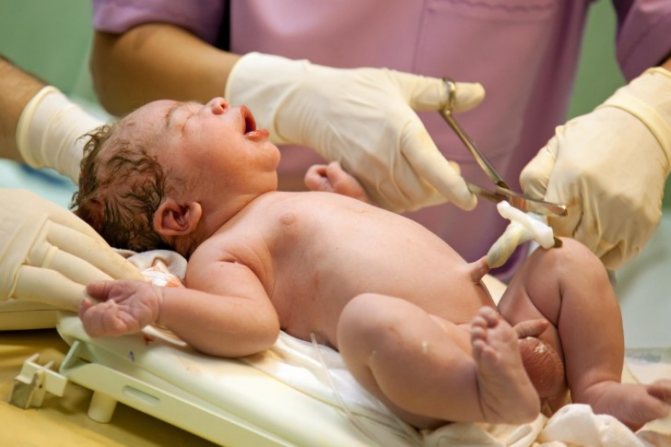
All newborns have a slightly protruding belly button, but in most cases it is completely healed within two weeks.
Porofix patch for umbilical hernia: reviews
Parents who are faced with the problem of an umbilical hernia in their baby should pay attention to the Porofix adhesive plaster. The medical product has helped many cope with this unpleasant illness. The positive effect will be enhanced by special exercises to strengthen muscles and massage. Procedures should be carried out daily.
In some cases, the therapeutic effect of using the patch may be completely absent or may be mild. A similar phenomenon is observed with late initiation of treatment for an umbilical hernia in a child.
The cost of the patch is the only serious drawback. The price of one product ranges from 140-200 rubles. It should be taken into account that at least 10 applications are required to complete the minimum course of treatment.
The Porofix patch is a safe and effective method for treating umbilical hernia in the youngest patients. The product can be used from the first days of birth of a child as prescribed by a doctor.
